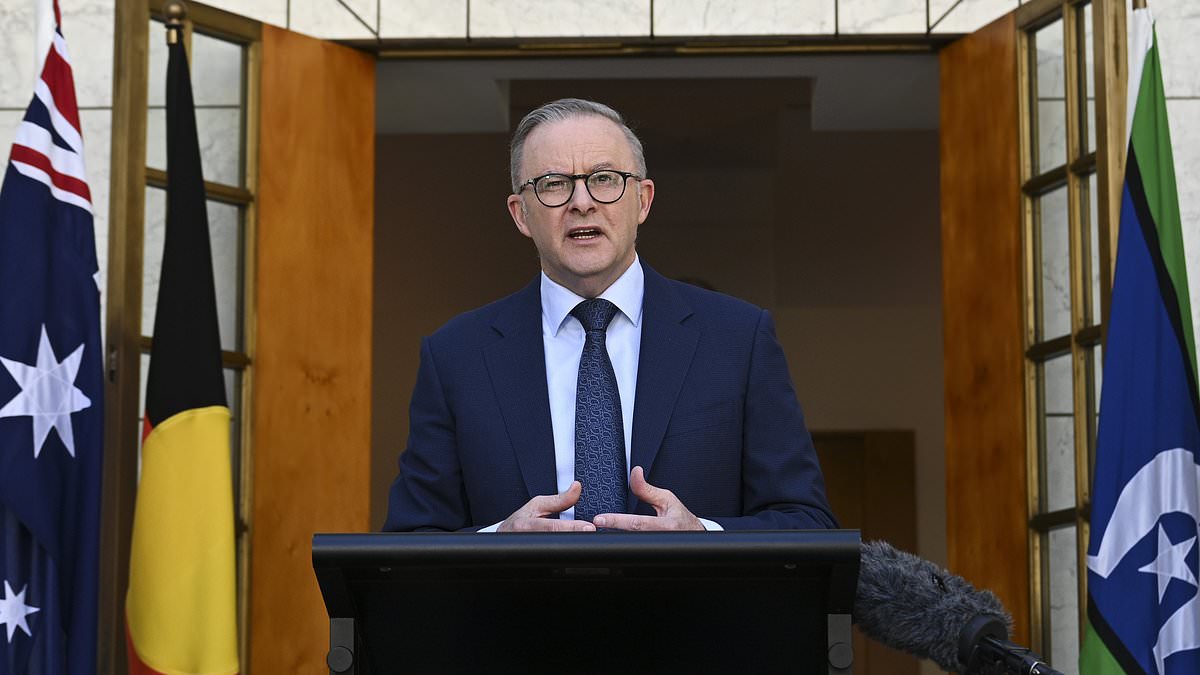Support for Anthony Albanese and his government has fallen in the states that helped secure Labor an election victory, as males and younger voters turn away from his government.
The latest Newspoll has found that the ALP lost significant ground in Victoria and Western Australia, while the Prime Minister’s popularity gradually fell over the six months leading up to the Voice to Parliament referendum.
Labor’s primary vote in Victoria fell from 41 per cent in March/April to 36 per cent in October.
Meanwhile, the Coalition’s primary vote rose from 33 per cent to 35 per cent.
Support for the Albanese government has fallen in the lead-up to the Voice to Parliament referendum (pictured, Prime Minister Anthony Albanese)
In Western Australia, a state crucial for Labor’s majority government in 2022, the Liberal party increased its primary vote by five points to 38 per cent.
By contrast, Labor experienced a two-point drop, bringing its primary vote also to 38 per cent.
In New South Wales, the Coalition’s primary vote dropped by one point to 34 per cent, while Labor’s remained stable at 38 per cent.
This change resulted in a slight improvement in the two-party-preferred lead for Labor, now standing at 56 to 44 per cent.
In South Australia, the Coalition’s primary vote decreased by five points to 30 per cent, while Labor’s increased by two points to 40 per cent.
On a two-party-preferred basis, Labor is leading at 57 to 43 per cent.
In Tasmania, the Coalition holds a primary vote of 25 per cent, whereas Labor’s primary vote is at 30 per cent.
Despite the slightly better results for the Coalition, Mr Albanese still remains far ahead of Peter Dutton (pictured left with Jacinta Nampijinpa Price) as preferred Prime Minister
Nationally, the poll also shows the government’s primary vote has dropped two points to 36 per cent while the opposition’s has risen by two points from 33 to 35 per cent.
The NewsPoll with a sample size of 6378 voters also revealed support for the government declined among male and younger voters.
The Coalition has clawed back male voters living in the suburbs while the Greens have made notable strategic gains among professional women living in the cities.
The recent increase in support for the Liberal Party reflects a four per cent swing in their favour against Labor in the two-party-preferred vote since the beginning of the year, changing the ratio from 57-43 per cent to 54-47 per cent.
Approval for Mr Albanese’s performance as leader has gradually fallen, and he’s taken a dive in both South Australia, where he chose to launch the Voice to Parliament campaign, and in Queensland.
But he still retains a huge lead over Peter Dutton when it comes to preferred Prime Minister, with support at 51 per cent across the nation while Mr Dutton is at 31 per cent.
The biggest divide was in Tasmania where the Prime Minister is at 59 per cent and the Opposition Leader is at 21 per cent.
